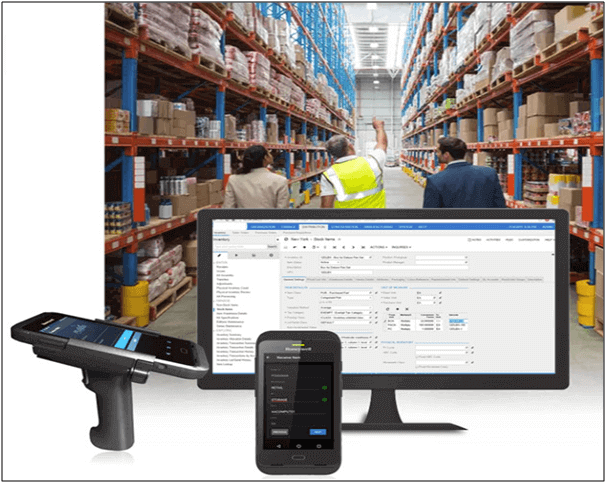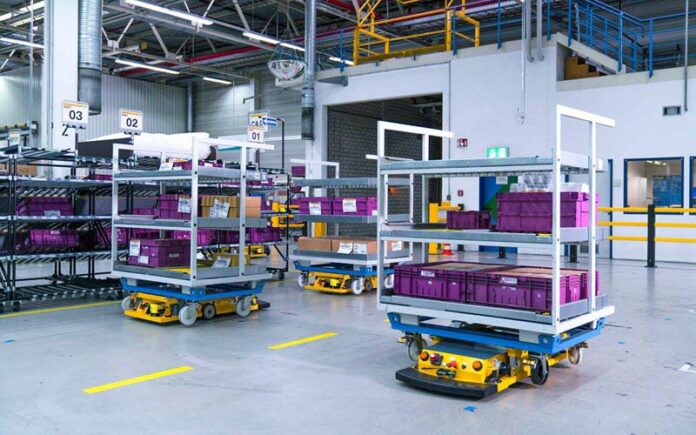When it comes to warehouse management, constant evaluation and adoption of crucial technologies are critical to improve profitability and stay competitive. Today, warehouse managers have a wide array of technologies to choose from as they strive to reduce costs, improve efficiency and streamline operations. They must ensure that goods, materials, and products flow effortlessly by optimizing their warehouse operations using warehouse technologies. What are the technologies being more productive to warehousing?
Table of Contents
Automatic Guided Vehicles (AGVs)
There is no better way to ramp up your storage and retrieval processes than to integrate automatic guided vehicles, otherwise known as AGVs, into your warehouse. The structural integrity of AGVs are evolving as technology moves forward, but even the models that have been on the market for some time have proven to be safer and yield a quicker ROI than manual labor. Some of their most important functions include pallet, rack, and other container storage, and even functions that control and automate the entire receiving process. The picture below shows the self-driving forklifts carrying carton boxes.

Warehouse Management Systems (WMS)
Implementing a WMS can help an organization reduce labor costs, improve inventory accuracy, improve flexibility and responsiveness, decrease errors in picking and shipping goods, and improve customer service.
Modern warehouse management systems operate with real-time data, allowing the organization to manage the most current information on activities like orders, shipments, receipts and any movement of goods.
Warehouse design, which enables organizations to customize workflow and picking logic to make sure that the warehouse is designed for optimized inventory allocation. The WMS establishes bin slotting that maximizes storage space and accounts for variances in seasonal inventory. Inventory tracking, which enables the use of advanced tracking systems, including radio-frequency identification (RFID), automatic identification and data capture (AIDC) and barcode scanners to make sure that goods can be found easily when they need to move.
Receiving and put away, which allows inventory to put away and retrieval, often with pick-to-light or pick-to-voice technology to help warehouse workers locate goods. Picking and packing goods, including zone picking, wave picking and batch picking. Warehouse workers can also use lot zoning and task interleaving functions to guide the pick-and-pack tasks in the most efficient way.

Radio Frequency Identification (RFID) Technology
RFID is an acronym for “radio-frequency identification” and refers to a technology whereby digital data encoded in RFID tags or smart labels are captured by a reader via radio waves. RFID is like barcoding in that data from a tag or label are captured by a device that stores the data in a database.
RFID has taken away much of that administration effort, by allowing operatives to simply scan a pick face and enter picked quantities on a keypad. More advanced solutions even eliminate the data entry altogether, leaving the operative to concentrate solely on the actual picking. Scanning technologies have had a similar impact in other areas of warehouse operation, such as receiving, put-away, and dispatch.
The picture below shows the RFID readers scanning the carton boxes as they passed through the conveyor belt.

Here are the top five reasons why RFID should be used in warehouses:
1. Tags do not have to be seen to read data. This means that tracking products or people can happen from anywhere in a specified range which maximizes speed and efficiency.
2. RFID tags can store up to 100 times the data of barcodes, allowing you to keep track of all the data you need for your inventory such as lot and serial number, size, manufacturer, vendor, expiration date, user, location on a production line and anything else you might want to know.
3. Readers can read up to 200 tags at once. This will increase speed and productivity since employees will not need to physically scan each label.
4. The position of each tag is flexible (if they are not blocked by metal or water) since the tag doesn’t need to be physically seen by the reader. For example, you can place tags in boxes or within a pallet.
5. RFID technology is functional inside and outside the warehouse. The technology has the capacity to withstand harsh environments and temperatures, even the tags!
Pick to Voice Warehouse Systems
In a complex and high-intensity warehouse where there are multiple picking locations that require pickers to be fast and accurate, a “pick to voice” or voice-directed system can be implemented to improve picking accuracy and the speed of the pick performed by the warehouse staff.
The full content is only visible to SIPMM members
Already a member? Please Login to continue reading.
References
Adam Robinson. (2019). “7 Innovative Warehouse Management Technologies to Adopt”. Retrieved from https://cerasis.com/warehouse-management/, accessed 22/06/2019.
Jon Goh Woon Keong, DLSM. (2018). “Nine Technologies to Boost Warehouse Productivity”. Retrieved from SIPMM: https://publication.sipmm.edu.sg/nine-technologies-boost-warehouse-productivity/, accessed 22/06/2019.
Margaret Rouse. (2018). “Warehouse Management System (WMS)”. Retrieved from: https://searcherp.techtarget.com/definition/warehouse-management-system-WMS, accessed 22/06/2019.
Martin Murray. (2018). “Pick to Voice Warehouse Systems”. Retrieved from: https://www.thebalancesmb.com/pick-to-voice-warehouse-systems-2221457, accessed 22/06/2019.
RM Somega. (2019). “The Top 5 Reasons for Using RFID in the Warehouse”. Retrieved from: https://rmsomega.com/the-top-5-reasons-for-using-rfid-in-the-warehouse/, accessed 22/06/2019.
Shelly Stazzone. (2019). “7 Smart Warehouse Technologies to Implement Today”. Retrieved from: https://www.camcode.com/asset-tags/smart-warehouse-technologies/, accessed 22/06/2019.
Winnie Soh Pin Pin, DPSM. (2019). “Five Essential Technologies for Inventory Control in a Warehouse Contract”. Retrieved from SIPMM: https://publication.sipmm.edu.sg/five-essential-technologies-inventory-control-warehouse-contract/, accessed 22/06/2019.

